 Packed with far more tunes than the typical Wackies re-release through Basic Channel, this extremely accessible CD comprising two long out-of-print albums will surely satiate reggae lovers.
Packed with far more tunes than the typical Wackies re-release through Basic Channel, this extremely accessible CD comprising two long out-of-print albums will surely satiate reggae lovers.
- Administrator
- Albums and Singles
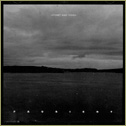 A record built from distorted, screaming renditions of Christian and Catholic prayers could’ve easily ended up buggering an already stiffened concept. Having already been thoroughly pillaged by bearded Norwegian sociopaths through the late eighties, this turns the concept into something beyond ineffectual ranting at the already converted. This re-released and reformatted six track disc sees Dominick Fernow spewing venom and generating tension.
A record built from distorted, screaming renditions of Christian and Catholic prayers could’ve easily ended up buggering an already stiffened concept. Having already been thoroughly pillaged by bearded Norwegian sociopaths through the late eighties, this turns the concept into something beyond ineffectual ranting at the already converted. This re-released and reformatted six track disc sees Dominick Fernow spewing venom and generating tension.
The opener’s surprisingly melodic beginning soon belches into life with furious on-the-verge-of-vomit vocals. Musically, on this track and a good meaty chunk of the rest of the material, this genuflects loudly at the altar of noise. Higher tones mangle and bugger anything attempting to sit still, entreating the skies to rain fire, popped toads and dog shit from the sky.
The vocals on Point and Void veer between staccato shrieking, calling out the rest of humanity as spineless quislings via perverted prayer, through to a queasy alien voiceover disturbing evening reality TV viewing. As well as the noise, there’s also the use of unidentified field recordings (an early a.m. café, backstage, a studio mic left running?) that reveals occasional background noises and accidental TV / radio chatter.
Repeating this idea, the closing "Thou Hast Created Me" builds on this mystery of the where and why as US police sirens slip by. This subtler use of mystery, and a partial reliance on the listener’s ideas / fears / desires, shows that even back in 2000 (when the two cassette’s were originally dropped) he was ahead of the noise pack. Punishment is always worse if the recipient is kept hanging on.
samples:
 
Read More
- Administrator
- Albums and Singles
 Packed with far more tunes than the typical Wackies re-release through Basic Channel, this extremely accessible CD comprising two long out-of-print albums will surely satiate reggae lovers.
Packed with far more tunes than the typical Wackies re-release through Basic Channel, this extremely accessible CD comprising two long out-of-print albums will surely satiate reggae lovers.
As with most albums originally releases under the direction of Lloyd "Bullwackies" Barnes, Rootsy Reggae / Visions Of John Clarke showcases a strong selection of talented musicians to support the poppy vocals that make these tunes so memorable. Clarke's lyrical abilities, while somewhat limited, sometimes distract with their simplicity, yet provide no real obstruction to appreciating his work. On the other hand, some of his clearly presented messages might polarize or alientate some of his potential listenership, a problem best evidenced on the glibly titled pro-life plea "Abortion." Surprisingly, Clarke offers very little in the way of "Jah praise," save for the reverential "Creator," though hints of Rastafarianism might be inferred from "Good Collie Weed," a track whose high-minded contents can be easily deciphered as more akin to addiction than benediction. For the most part, the subject matter of most of these topical songs stick to somewhat basic reggae music premises, such as social commentary ("Recession," "Pollution") and male-female relationships ("You're Just The One," "Shack Up With You"). Despite all that, Clarke almost always delivers the goods, crooning and wailing unhindered throughout.
It is difficult to say definitively which of the two albums presents Clarke's better collection of material, though the Rootsy Reggae half seems tighter and more coherant. Devotees of the reissue campaign ambitiously and admirably undertaken by Rhythm & Sound cohorts Moritz Von Oswald and Mark Ernestus will find some of this material here familar, as two of the tracks on this CD, "Recession" and "John Brown," were featured on the repackaged Reggae Goodies Vol. 1 & 2 compilation, though that probably wont stop any of them from snagging this on sight. For those entirely new to Wackies, this 76 minute CD offers a phenomenal value, but dub purists seeking more ascetic terrain might opt to give it a pass.
samples:
Read More
- Administrator
- Albums and Singles
Robert Hampson/Steven Hess:
"S/T"
CD

A sensible combination, brought to light by a chance contact resulting in a fairly lengthy process of recording, listening, and mixing. Robert Hampson, is, of course, the visionary behind sound behemoths LOOP and MAIN, and even served a highly productive position within GODFLESH, ORGANUM, and also collaborated with JIM O' ROURKE. Steven Hess is a percussionist who provides comfortably obscure rhythms and textures for PAN AMERICAN, FESSENDEN, ON, and HAPTIC.
Together, Hampson and Hess create a delightful peephole into the space where resonance from various percussions exist. These are the indirect moments that are just as real as those obvious times when a drummer nails the snare drum in 4/4 time. This is the stuff that for without, the attack, the beat, the percussion itself, would be lifeless pricks of meaningless sound. These recordings are filled with the active and excited ghost of interaction with material; highly unreal at times, and undeniably human at others. For those familiar with their previous endeavors, this is certain to please. For others, you are about to hear the collaboration of two people who know exactly what they are doing, and have created an even more powerful joined effort. Clearly tasty.
CDep released in an edition of 500, packaged in mulitple layers of clear material. See?
Available online from Crouton directly: http://www.croutonmusic.com/cr31.htm
Read More
- Administrator
- Albums and Singles
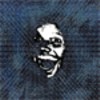 The new album from Ben Reynolds is almost more of a collection of alien beeps, hums, chimes, and drones than actual songs since there’s little melodic interplay between these elements. As an interpretation of the cosmos, however, it succeeds splendidly.
The new album from Ben Reynolds is almost more of a collection of alien beeps, hums, chimes, and drones than actual songs since there’s little melodic interplay between these elements. As an interpretation of the cosmos, however, it succeeds splendidly.
A sad little melody does creep under outer space transmissions, as if two passing space ships are talking back and forth, on “Unmighty Plumes of to Moon Shit” while “Telecopter Ordinary Century” is like attending church on another planet with its stately organ. “Sweet Misty” features strange voices as well as bloops that could be from electronic music’s infancy. A crew repairs a space station on “Havoc Yawk” between bouts spent fending off enemies who blast lasers in a battle of some unknown war. Apart from the constant machinery pulse which goes on for too long, I like the rest of “Classic at the Sound World” with its gentle tones and skittering almost-melodies.
One of the album’s weak spots is that although it’s generally ambient by nature, the tracks are atmospheric in mostly the same way, with only subtle variations from song to song. In this sense, it’s excellent background music while exploring outer space, but it’s a little too fleeting at times to give it prolonged earthbound attention.
samples:
Read More
- Administrator
- Albums and Singles
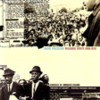 The fourth Henri Pousseur CD in Sub Rosa’s Early Electronics series features two long works. Although his condensation of his own interpretation of the Faust legend has been heard infrequently, this is the premiere of "Crosses of Crossed Colors" and to me is the more intriguing and powerful of the two.
The fourth Henri Pousseur CD in Sub Rosa’s Early Electronics series features two long works. Although his condensation of his own interpretation of the Faust legend has been heard infrequently, this is the premiere of "Crosses of Crossed Colors" and to me is the more intriguing and powerful of the two.
The three movements of "Crosses of Crossed Colors" employ two pianos as well as turntable and tape machine operators who all support highly-accoladed solo vocalist Joy Blackett. Pousseur, who believes in open works that allow for improvisation, uses Blackett in the call and response gospel style that was central to the development of jazz and blues. Blackett uses her powerful, incantatory voice primarily to recite variations of a speech given by 19th Century Native American leader Chief Seattle, which emphasizes the sanctity not only of all men, but also the very land on which they live. After each of Blackett’s statements, the other musicians answer with piano phrases; radio snippets of news programs, conversations, and popular music; and record excerpts of operatic notes and indigenous music. Blackett links Chief Seattle’s sentiments to the Civil Rights Movement of the 20th Century to stirring effect. Not only is Blackett’s performance moving, it’s also particularly relevant even today to the problems of racism faced in the aftermath of Katrina and to the ecological emergency the planet faces as its resources are obliterated at an astonishing rate. If anything, the persistence of these issues highlights how important they remain.
In contrast, any issues are handled obliquely in "Jeu de Miroirs de Votre Faust," which is basically a tape collage "diary" of a previous performance of Pousseur’s original composition, mixing its themes, lyrics, and even syllables into a non-linear, fragmented version of the original. The result is mostly enjoyable, though I must admit that I would have gotten more out of it were my French better. Still, its construction alone is fascinating enough to make the recording compelling.
Although both pieces have structural similarities, Blackett’s performance alone makes "Crosses of Crossed Colors" the highlight, and the opus might one day be considered one of Pousseur’s best works.
samples:
- Crosses of Crossed Colors, Part One
- Crosses of Crossed Colors, Part Three
- Jeu de Miroirs of Votre Faust
 
Read More
- Administrator
- Albums and Singles
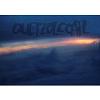 Queztolcoatl is the one man noise project of Dublin’s Timothy. All of the releases I’ve listened to from his label, Haunted Tape, are heavily indebted to anything and everything on the similarly named American Tapes run by Wolf Eyes. This holds true for The Eternal Electrical Flesh Storm. Much of the hour or so of audio could be culled from anyone of the many lacklustre Wolf Eyes releases. It sounds to me like noise done for the sake of boredom.
Queztolcoatl is the one man noise project of Dublin’s Timothy. All of the releases I’ve listened to from his label, Haunted Tape, are heavily indebted to anything and everything on the similarly named American Tapes run by Wolf Eyes. This holds true for The Eternal Electrical Flesh Storm. Much of the hour or so of audio could be culled from anyone of the many lacklustre Wolf Eyes releases. It sounds to me like noise done for the sake of boredom.
There is not much here to make me sit up and pay attention. Layers of looped and heavily distorted screaming combined with swathes of feedback are the central components of the album. However there is little creativity or innovation. The tracklisting is on a small scrap of paper with a font that is very American Tapes-ish, again this aping of Wolf Eyes is pretty dull and frustrating to try and read. The painted CD-R equally makes me want to shake Hurley and ask him to please, please, please consider finding some more influences.
The opener, “Wild Spiral,” is a mediocre and inoffensive attempt at noise. Noise should be vibrant and all consuming, not easily ignorable and lifeless. The production is pretty poor. While I “get” that DIY noise with cheap equipment is hip and very much in this season, it still sounds piss weak. All of the pieces are thin and tinny sounding. There is no oomph to them. I know Hurley has the ability to make a thick wall of sound as I’ve experienced one of his other projects live and I enjoyed it immensely. Quetzolcoatl did not live up to my expectations at all. Only occasionally does the noise expand to become even remotely gripping, segments in “Lost Forest Vanishing to Nowhere” and “Dead at Sea/Lost Lights” piqued my interest. Apart from these brief moments The Eternal Electrical Flesh Storm is background noise, not the type of noise Hurley was aiming for I’m guessing.
The CD-R and cheap audio equipment culture has allowed some gems to make it out into the real world that would otherwise never be heard. On the flipside, it has also allowed thousands of average (and worse) music to get out further than they should. The Eternal Electrical Flesh Storm is a prime example of a lack of quality control, not enough artists take the time to work out an album or even an EP as much as they should.
samples:
Read More
- Administrator
- Albums and Singles
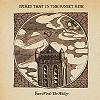 This is a psychedelic folk four piece that from Chicago who combine a fin de siècle chamber style similar to Rasputina but stripped of any rock and pop pretensions. Blended with eastern tones and rhythms the result is a spectacular album.
This is a psychedelic folk four piece that from Chicago who combine a fin de siècle chamber style similar to Rasputina but stripped of any rock and pop pretensions. Blended with eastern tones and rhythms the result is a spectacular album.
The music is complex and ornate. Frequently the four ladies seem to be playing four different but complementary songs, such as “Sheye” which is hypnotic and primal. At times it threatens to fall apart but the intensity of the piece keeps it together. This breaks into the far more sedate but equally intense “Sort Sands.” Here the eastern influences come to the fore and the music brings to mind images of a desolate and beautiful desert. The vocals are scorching hot and sexy. It reminds me of Dead Can Dance if Dead Can Dance were actually any good. There is also sometimes an almost queasy quality to the music like on “Born in a Room,” it is disorientating and not something I can listen to with a couple of drinks on me.
The first couple of times I listened to Four Winds the Walker I found some of the vocals tough going. At times the ladies (they take turns with singing) sound bored disinterested, such as on “Serum,” the definite low point of the album. Other times the vocals were grating on the ears but once I accepted their vocal styles and realised it wasn’t just bad singing, it clicked with the music nicely. “Imaginary Skin” contains some fantastic surreal lyrics: “So will she go beyond the minds with all their mazes?/ Mazes that lead through finds with all their faces?” Doesn’t look as great on paper granted but believe me, it’s wonderful on disc.
I was recommended to listen to Four Winds the Walker by a friend and next time I see him I owe him a pint. It is an absolute corker of an album. It definitely improves every time I listen to it, there is so much intricacy in the playing and vocals that every time there is a new element revealed or an audio path to follow through the album. It is an album rich in detail that I could immerse myself in for days on end.
samples:
Read More
- Gary Suarez
- Albums and Singles
Their tightly produced beats and futuristically urban atmospheres are marred by an unfortunate selection of mostly lackluster emcees like Rqm and Maxx, whose respective flows recall everything I hate about "indie" hip hop. Exceptions to this rule are Ras T-Weed's sublime and subdued delivery on the jagged "Blessed" and "Corridors of Power," the latter featuring Neonman doing his best Shaun Ryder impression over a funktastic bassline and speaker rumbling beat. Rider Shafique's notable input on "Rising Tides" nearly distracts from the aforementioned Rqm's unimpressive contribution to this otherwise well executed darkly dubby dancehall cut. I would've probably enjoyed this album far more had Tolcha taken the Jamaican ascetic aesthetic to heart and rinsed most if not all of the vocals from the mix. Perhaps an instrumental version is in order.
Read More
- Administrator
- Albums and Singles
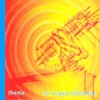 For their second album, this trio utilizes traditional and exotic instruments that are refocused digitally into airy, minimalistic atmospheres with a quasi-mystical vibe that's geared more toward darkness than enlightenment.
For their second album, this trio utilizes traditional and exotic instruments that are refocused digitally into airy, minimalistic atmospheres with a quasi-mystical vibe that's geared more toward darkness than enlightenment.
The production quality is impeccable, yet this gives the music a glassy sheen that keeps it from becoming intimate. For me, songs like "Jisatsu" and "A Few Words Failed" are too cold and clinical to be used for meditative purposes, and too unsettling to be relegated to the background. Things do warm up a bit with the chanting that appears on "East of Now," accompanying instruments that finally reveal their organic origin, but this track almost seems at cross-purposes to what transpires previously. The end of "Our Angels Orbit Future Places" contains a forlorn piano and children's voices that bring out a humanity previously absent, something the group could have explored further.
Much of the material seems to lack something, like vocals or some sort of visual element, but I can see how performed live this really wouldn't be as much of an issue with the proper setting and context. Too many of their sounds, not to mention the mythology they invoke, remind me of Coil, which isn't too great of a leap considering Sion Organ mastered the album, but they do suffer in comparison. Even if not a whole lot of new ground is broken here, they create decent dark ambience, I only wish that there were more things to encounter in the shadows.
samples:
Read More
- Administrator
- Albums and Singles
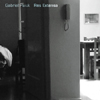 Inspired by the low-volume, "marginal" sounds that make up the unconscious bed music of urban living, Paiuk creates a tape collage of musique concrète for the microsound/lowercase generation.
Inspired by the low-volume, "marginal" sounds that make up the unconscious bed music of urban living, Paiuk creates a tape collage of musique concrète for the microsound/lowercase generation.
Res Extensa isolates the small sounds of mechanical interference occurring for most people daily, from toaster-hum and PC-error to the faraway rumble of aircraft. His goal is not so much broad re-contextualization, but, as the title might suggest, a kind of extension past individual association towards the creation of what he calls "a sensitive whole," where sounds are "exposed in their affective characters and our connections to them." A bit cryptic in his desires, Paiuk is asking for something more than what a standard concrète composer would: not that the toaster be recognized as a familiar word within an unfamiliar sentence structure (and all of the old associations that this new placing carries over or leaves behind), but that the toaster be semi-recognized as maybe-a-toaster-as-I-know-it but also maybe this or that device or field of audible energy that I interface with enough that it does not feel alarming in juxtaposition.
The layered construction of Res Extensa suggests that sounds be left to flail and mingle in an interzone between immediate, "physical" reaction and direct cognitive interpretation. For me, the appeal of microsound or lowercase music or related things like The Conet Project has always worked on a similar level: the fusing of fields of small, not-immediately-jarring noise interferences (or the "glitch"-opposite: forced interferance of silence or faulty connection) to a level of dynamism and nuance where listening is less geared towards a 'picking-out' of sounds or the tracking of particular extremes but to the establishment of a kind-of limbo state, a suspension among past-recognizable forces seen now as more forces or fields of energy than anything solid.
The Conet Project dramatizes this idea by isolating literal phantom frequencies, radio energy with indirect aim and obscured potential. In comparison, Paiuk’s piece is a more comforting and relatively lush soundworld, its spaces small and inviting and its pace a slow unraveling of disturbances that never trump each other. Paiuk seems to imply that any overt drama in Rec Extensa comes from projected sources, and in this sense, the piece is some most unlikely ‘body music’ existing, as it tries to, in the realm of the senses with a barrier (however slightly or necessarily permeable) against all that might allow these sounds to fade into meaning.
samples:
Read More

